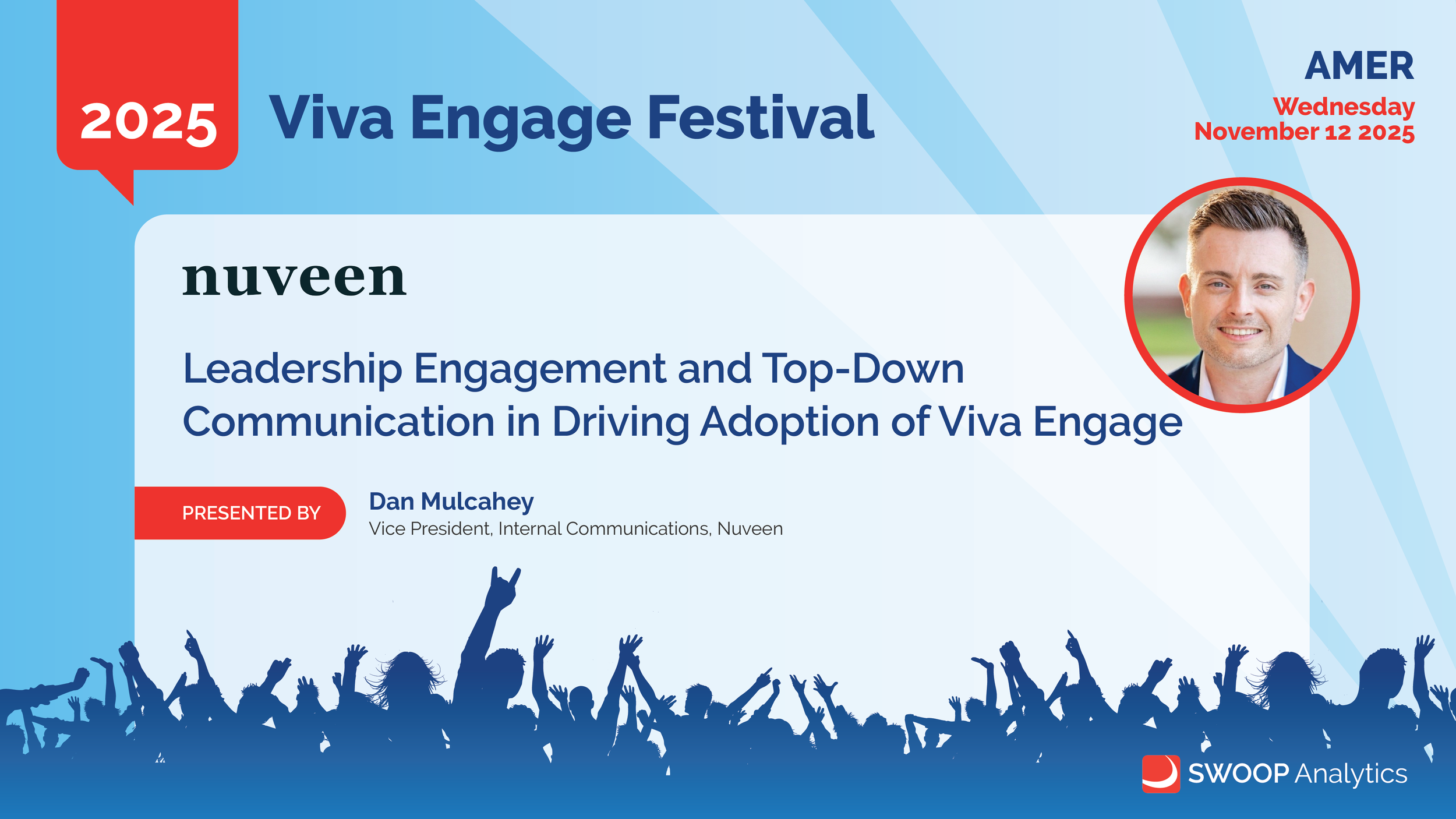Using Viva Engage as a strategic change management platform (case-study)
What this session was about
Louise showed how Danske Bank used Viva Engage to support one of the biggest organisational moves in company history — relocating thousands of employees to a new HQ. Viva Engage became the heartbeat of the change program, and a real-time pulse check for employee sentiment.
-
Key Messages
Viva Engage was the fastest way to reach the right people. They used it to speak directly to the employees impacted by the office move.
Employees wanted clarity on daily life, not corporate strategy. Viva became a safe space for questions about desks, chairs, transport, access, setup, and routines.
Announcements and proximity matter. Clear, simple updates significantly reduced confusion and stress.
Co-creation generates huge buy-in. Naming competitions, giveaways, and involvement activities built momentum and excitement.
Use Viva for “temperature checks”. Posts revealed what employees were actually worried about, allowing comms to adjust approach fast.
When ownership drifted, tone collapsed. When the channel shifted to another team who didn’t value conversation, engagement deteriorated. Once internal comms regained ownership, trust returned quickly.
What you can take from this
Focus on what employees actually need in moments of change.
Make the tone human. Questions, emojis, everyday language.
Always respond early, even if it's “thanks, we’re looking into it.”
Let employees help shape the journey; co-creation builds belonging.
Don’t hand a strategic Viva community to a team who can’t maintain dialogue.
Meet the speaker:
Louise Durmus Kay
Chief Communications Consultant






